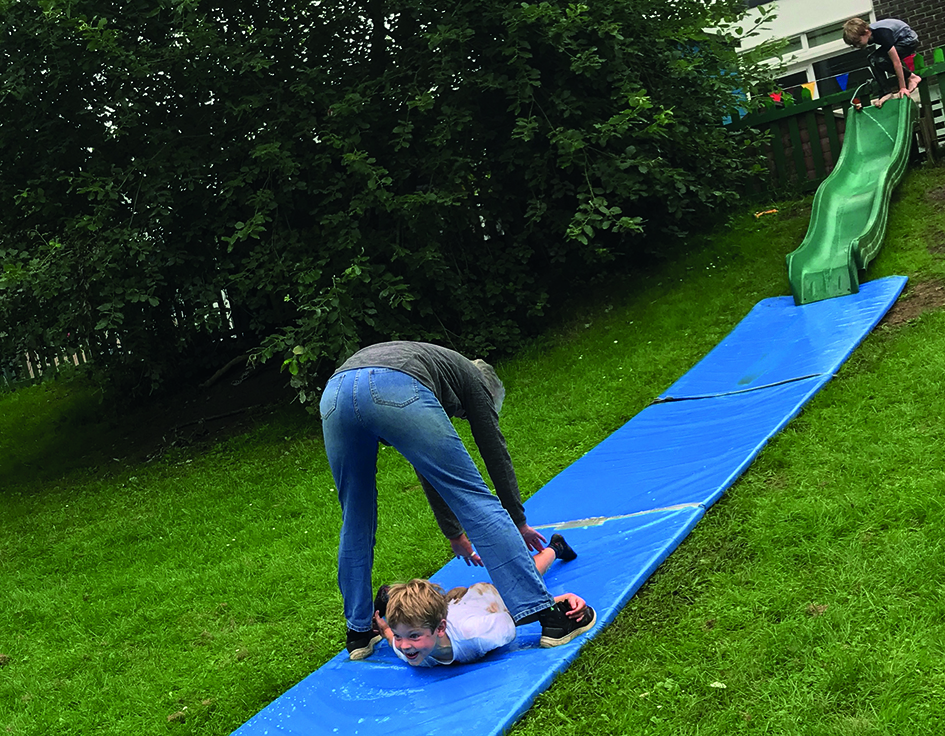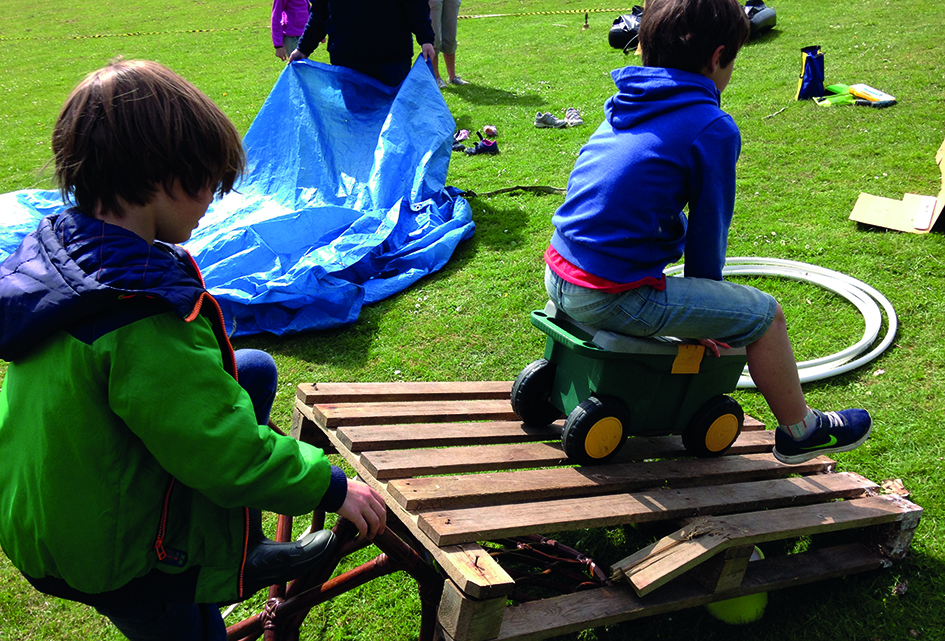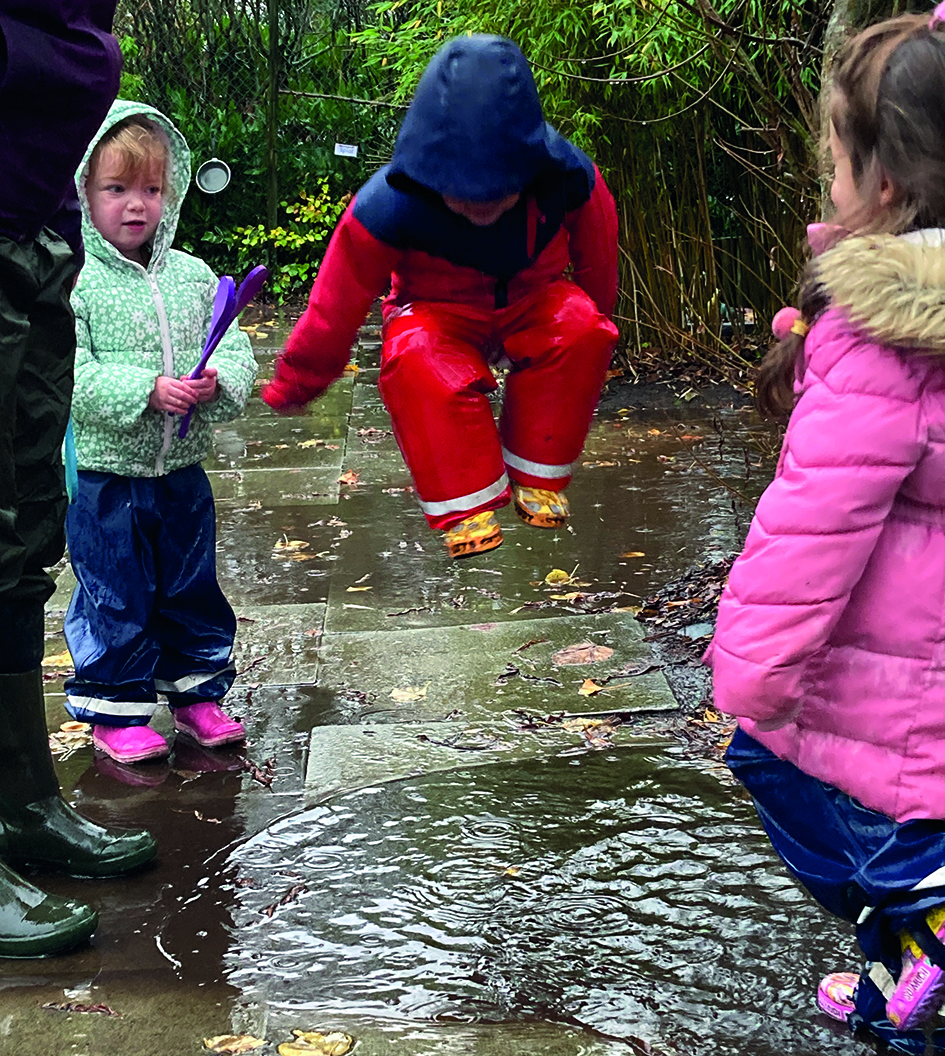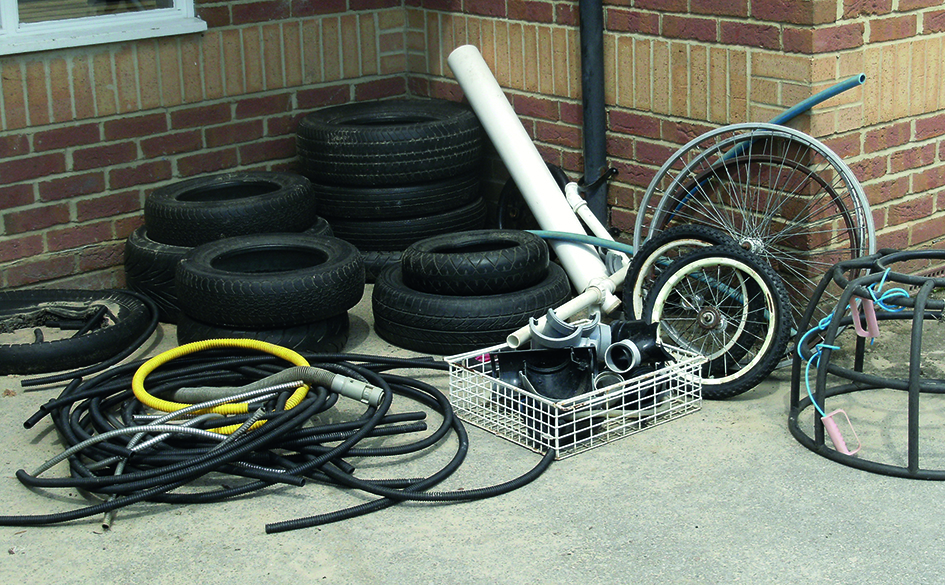
quick wins – friction
 Talk about and experiment with friction – I know it’s not on the curriculum until late primary school, but the concept can be understood by younger children. Here are some simple experiments to try that will explore the differences between rough and smooth surfaces:
Talk about and experiment with friction – I know it’s not on the curriculum until late primary school, but the concept can be understood by younger children. Here are some simple experiments to try that will explore the differences between rough and smooth surfaces:
- Friction can cause heat – test this by rubbing your hands together vigorously; they will heat up because of the friction of the movement. This is the same principle that causes two sticks rubbed together to create enough heat to start a fire.
- If you have a slide, test what happens when a child slides down it while sitting on a piece of silky fabric and then on a rubber or foam mat. Silk is very smooth and reduces the friction.
- Rub a nail file or piece of sandpaper along a pencil to demonstrate the ‘cutting’ effect of friction caused by a rough surface. Compare what happens if you rub an ice cube along the pencil.
- Take a square each of sandpaper, sugar paper and high-quality smooth copier paper. Punch a hole along one edge of each square and loop some string through it. Lay each piece of paper (rough side up) onto a flat surface and place a paper cup (right side up) on top of each piece. In turn, quickly pull the string to take the paper away – can you get the cup to stay upright? Is it easier or harder with the sandpaper? Why?
- Collect half a dozen toy cars. Push them gently and watch how far they travel – compare distances by thinking about whether some children pushed harder than others, or whether some cars have smoother wheels. Now turn the cars on their roofs and repeat the experiment. How far do they move this time? Why?
continuous provision– loose parts for motion play
 There are many definitions of continuous provision, but I think we can all agree that having the time and space to explore resources, and having an abundance of those resources, are key. A ready supply of resources for motion play are almost certainly already out in your setting – as with many elements of learning through play outdoors, the challenge here is thinking differently about the equipment children access on a daily basis and encouraging them to make choices about their play that will add depth to STEM understanding.
There are many definitions of continuous provision, but I think we can all agree that having the time and space to explore resources, and having an abundance of those resources, are key. A ready supply of resources for motion play are almost certainly already out in your setting – as with many elements of learning through play outdoors, the challenge here is thinking differently about the equipment children access on a daily basis and encouraging them to make choices about their play that will add depth to STEM understanding.
- Objects with wheels (not just wheeled toys): bikes, trikes and ride-ons; trolleys; tuff trays on stands; office chairs; small-world vehicles; train sets.
- Objects that roll: balls; tubes; pipes; sticky tape rolls; cotton reels and cable reels; corks; logs; wheels and tyres; children’s own bodies.
- Sloping surfaces: highlight inclines of all kinds – grassy, Tarmac, wood, guttering, the slide – inviting children to propel themselves or objects down them. Offer alternative textures such as tarpaulin, carpet tile or role-play fabrics, to allow children to cover slopes and compare how objects then move along them.
- Use hollow blocks and construction materials to create steps and slopes; vary the incline of slopes to test how that affects the speed and distance travelled by a toy car or a ball.
- Shape sorters, picture puzzles and games with gears are also useful for talking about different types of movement.
- If you have stairs or steps, push a selection of objects from the top and watch what happens. Curate a collection of objects that move in different or unusual ways, for example a tennis ball, a Duplo brick, a shoe, a Slinky spring toy. Why can’t we bounce a ball back up the steps? What happens if we push the objects very hard at the top of the steps?
in the moment – water play
 The introduction of water to forces play makes a huge difference to the movements objects will make. Objects that require us to apply a force to move on a dry surface – for example, a cork or a toy boat – will move without continued human intervention in water. There’s still a force applied, but it’s from the motion of the air and water, rather than by a child prodding the object.
The introduction of water to forces play makes a huge difference to the movements objects will make. Objects that require us to apply a force to move on a dry surface – for example, a cork or a toy boat – will move without continued human intervention in water. There’s still a force applied, but it’s from the motion of the air and water, rather than by a child prodding the object.
Identify the areas of your setting where water pools or flows in rivulets on rainy days so that you’re ready to experiment.
- Compare the movement of bobbing corks in a tuff tray with corks placed in a puddle or in a stream of rain heading along a channel.
- Bounce a ball onto a hard surface and then into a puddle of water – what do children notice about the ball’s motion?
- Use chalk to mark the places where rainwater is collecting and then add arrows to show the direction the water is moving in to drain away. What do children notice about the arrows’ direction?
- Seek out vessels that have filled with rainwater. Use the water in them to ‘slosh’ objects along the ground. Talk about how much water was needed to make objects move.
- Ride wheeled toys through the puddles and streams to make tracks and patterns. Can children fit the right wheels back into the dried-out impressions?
Enhancement –
 Add art supplies and junk modelling resources to make your own wheeled vehicles.
Add art supplies and junk modelling resources to make your own wheeled vehicles.- Use playdough or clay to form balls or sausage shapes to test rolling abilities.
- It’s relatively quick to set up slopes with different textures, but add distance markers using tape measures, metre rules or just by chalking on the ground. Use a variety of different moving objects to test ideas about wheel size, weight of the object, steepness of the incline, type of surface at the end of the ramp. Reinforce mathematical adjectives such as faster/slower/further/steeper/longer/heavier.
- A ‘dolly’ is a small circular or square platform on wheels – children will use it in dozens of ways (not least for moving heavy objects). Test the forces needed for pulling and pushing by tying rope around a bread crate and pulling it along; load it up with a person or a heavy object and have another go.
planning ahead
 Collect wheels and tyres of all kinds (I often raid the local tip) and save them as a rich source of loose-parts play. Think about harvesting pushchair and scooter wheels, castors from furniture and tyres of various sizes, from wheelbarrows to tractors. Ask parents and the local business community to keep you in mind when they dispose of objects with wheels, such as plant dollies or office chairs, so you can add the wheels to your collection.
Collect wheels and tyres of all kinds (I often raid the local tip) and save them as a rich source of loose-parts play. Think about harvesting pushchair and scooter wheels, castors from furniture and tyres of various sizes, from wheelbarrows to tractors. Ask parents and the local business community to keep you in mind when they dispose of objects with wheels, such as plant dollies or office chairs, so you can add the wheels to your collection.- Set up a mechanic’s garage with opportunities to ‘change’ the tyres on wheeled toys in the setting – could you set up a pulley system to lift vehicles above children’s head height, just like in a real garage?
- Ask if any parents have a Newton’s Cradle toy you can borrow – it has five heavy ball bearings suspended on wire from a frame, that demonstrate Newton’s law of conservation of energy, and children will find it fascinating if they’ve not seen one before. The physics behind the movement is complicated (Wikipedia, if you really want to know), but playing with a Newton’s Cradle is mesmerising.
some simple terms
 Forces are pushes or pulls that change the speed or motion of an object.
Forces are pushes or pulls that change the speed or motion of an object.- Friction applies resistance between two surfaces.
- Wheels and axles help objects move by reducing friction.
- Gravity is the force that ‘glues’ us all to the Earth, pulling us towards its centre.
Glossary: The language you used to support and describe the activity will also influence how children process it. Try to make STEM vocabulary – even complicated concepts such as friction – a regular and frequent part of general play. Movement; motion; force; speed; direction; distance; wheel; tyre; axle; ramp; slope; gravity; drop; bounce; flow; friction.









